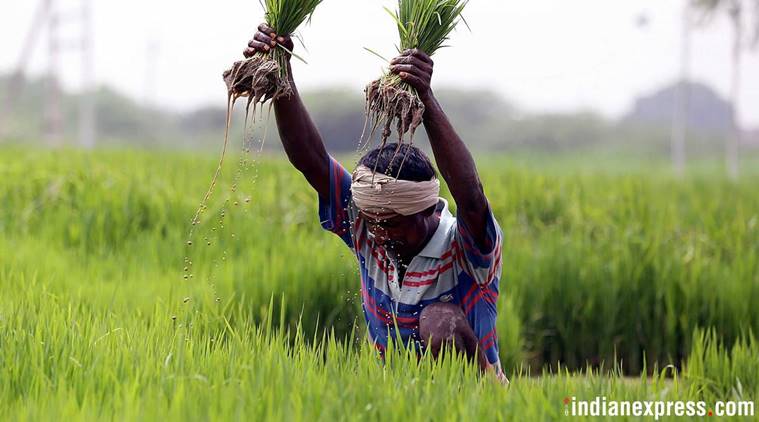
Continuous rainfall since early Monday morning brought great relief to the farmers of the state, particularly in Kandi belt, a sub-mountainous region, though, agriculture experts asked them to be aware of the attack of ‘yellow rust’ disease on wheat crop as low temperature and winds are ideal for its spread.
Punjab meteorological department revealed that nearly 4 to 5 mm rainfall has been reported from most parts of the state during the day and it may increase by evening. Moderate rain will continue for the next 48 hours in Punjab and Haryana, said the department.
“Slow and continuous rain after brief intervals will last till Wednesday. Strong winds and thunderstorms are also expected in several parts of state,” said Director of India Meteorological Department, Chandigarh, Surinder Pal, adding Punjab is still rain-deficient this winter. “This rain, which is a result of western disturbances, was must,” said he.
Met Director Pal added that due to the rain, the temperature has gone down by 5-6 degrees Celsius. As on Monday, the average maximum temperature of Punjab was 15 to 16 degrees Celsius, while before rain it was between 19 and 20 degrees Celsius. “As per the met department records, day temperature in Amritsar and Bathinda was lowest at 14.7 and 14.5 degrees Celsius respectively on Monday, while lowest night temperature was recorded at Gurdaspur at 4.8 degrees at 3.00 am,” he said.
Experts and farmers also agree on one thing that this rainfall is like a tonic for Rabi (winter season) crops, mainly wheat, besides reducing the burden on groundwater.
Farmers said that ins the absence of rain, the entire irrigation burden was on groundwater. In Kandi area, where farming is mostly rain-fed, even the groundwater was not available, said farmers. Hoshiarpur, Pathankot, Nawanshar, Ropar and Gurdaspur districts have large areas under this sub-mountaneous region.
“Wheat crop was in need of second irrigation after December and the rain has provided much relief,” said Satnam Singh Aujla of Jandhusingha village.
Rakesh Thakur of Bhunga block in Hoshiarpur said that their entire crop depends on the rain. “If good rains come, our crop also gets better,” said he.
Agriculture Development Officer of Jalandhar Dr Naresh Gulati said that this rain is a health tonic for the crop, which is at tilling stage.
“But farmers need to be aware of the attack of the ‘yellow rust’ disease, which has been noticed in a village of Ropar district recently, as it spreads when there is low temperature and strong winds. It is an air-borne disease. The farmers should check the crop regularly and if see yellow rust, which lead to powdery strips on green leaves, they should inform agriculture officials and go for immediate spray of propiconazole, which is a fungicide. They need to mix 200 ml of it in 200l water to spray on one acre land,” he said.
Agriculture Director Dr Jasbir Singh Bains said the rain will lessen the burden on groundwater and maintain the much-required cold weather for wheat.